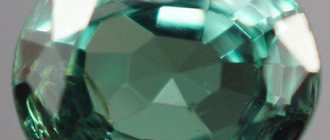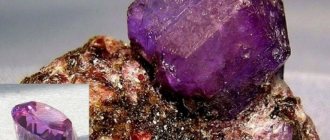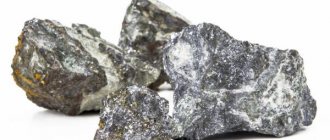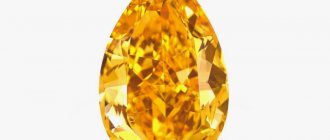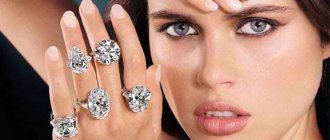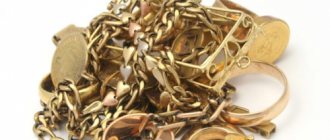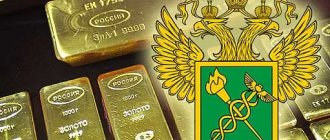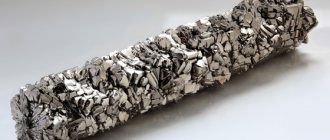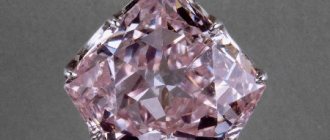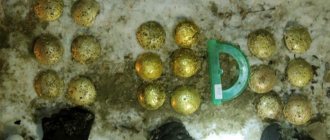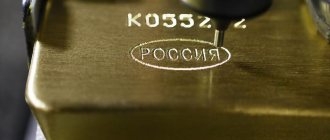We present to your attention the most valuable and expensive precious metals. It turns out that there are materials in the world that are much more expensive than platinum and gold, which we know very well.
First, let's look at natural precious metals. Please note that prices may be outdated, but the order of precious metals in terms of cost has not changed.
Rhodium $225.1 per 1 gram
Opened in 1803. World reserves of rhodium are estimated at only a few tons, and annual production is measured at hundreds of kilograms. Rhodium is such an expensive metal that it is most often used only in those areas where it is absolutely irreplaceable. 98% of rhodium is used to produce automobile catalysts. In recent years, the need for rhodium has increased 10–13 times. The high cost of the metal forced the search for equivalent substitutes, which is done in the USA, Japan and other developed countries.
Prospects
One of the main areas of nickel consumption is alkaline batteries (accumulators). It is being updated in the wake of interest in the production of electric vehicles. Today, the main battery component is cobalt, but it is expensive, and supplies from Africa are problematic. More efficient samples with dominance of lithium and nickel have been developed. It has been established that thanks to nickel, the power of batteries increases. Moreover, its price is six times less than cobalt, and its supply is 20 times higher.
Experts predict an increase in demand for nickel by 2025 to 400,000 tons (from 75,000 tons in 2021).
Platinum $70 per gram
Platinum was known in Ancient Egypt, Greece, Ethiopia and South America. At first, platinum was considered white gold, but no use could be found due to the difficulty of processing it. Counterfeiters were the first to use platinum, since a cheap, fairly heavy (compared to silver and gold) metal with a high density could weigh down coins.
Methods of extraction and processing
Almost all nickel is obtained from garnierite (green nickel ore) and pyrites.
Mining is carried out using the standard closed (mine) method for most ores.
The extracted raw materials are recovered using three methods:
- Interaction with coal dust in rotary tube kilns. The resulting iron-nickel pellets are removed from sulfur, then calcined and treated with an ammonia solution. The acidified solution is exposed to an electrolyte to produce metal.
- The metal is recovered from oxide ore using an aluminothermic method.
- Carbonyl method. Copper-nickel matte is obtained from the ore, over which CO is released under pressure. The result is tetracarbonylnickel. It is a volatile compound and therefore decomposes when exposed to heat. The metal turns out to be especially pure.
The carbonyl method also appears in the literature as the Mond method.
Gold $45 per 1 gram
Gold is the main precious metal, recognized as such throughout the world since ancient times. Gold seems to have been created by nature itself for minting coins and making jewelry: it is found exclusively in its pure form, ductile and resistant to corrosion, homogeneous, compact, in short, an ideal, in a sense, metal. Now you can buy gold in jewelry stores and in banks.
Is it profitable to invest in precious metals?
Of course, the rarest metals are valued many times more, but professional investors do not recommend buying them. For successful investments, it is better to choose the most common metals that are in stable demand. Now it is palladium, platinum, gold and silver.
To understand how profitable it is to invest in these metals, it is enough to look at the tables of price changes and profits provided by the Central Bank. Gold | USD | 1 oz
XAUUSD chart courtesy of TradingView
Gold shows the best results in terms of stability.
According to official data over the past 10 years, palladium has proven to be the most profitable investment.
For example, in 2010, one gram of this metal brought investors almost 125 rubles. However, this same metal turned out to be the most unstable. Price crashes happen extremely often.
Palladium | USD | 1 oz
Schedule PL1! provided by TradingView
Investment methods
The list of possibilities here is quite wide, but they all have their pros and cons:
- Buying bullion. The easiest way to invest. However, when selling, you will have to pay 18% VAT, and when selling to a bank, you will also have to pay 13% income tax.
- Buying coins. Collectible coins are not the best type of investment. Reason: high cost and 18% VAT. They are of greater value to numismatists than to professional investors.
- Shares of companies mining precious metals. They can bring large and constant income, but there are also some inconveniences: they can only be bought on the stock exchange, and you cannot do without the services of an experienced broker.
- Securities. Quite a new but interesting way of investing. You can buy securities on the stock exchange. Each security is backed by 3.1 grams of gold reserves held by HSBC in London. The only downside: with a modest investment, you won’t be able to cash out the papers in real gold.
- Bank account. There are two options here: a COX account or a compulsory medical insurance account. In terms of generating income, it is the second option, an impersonal metal account, that is interesting. According to the principle of operation, this is nothing more than a foreign currency deposit. The interest on deposits is small, but if the price of metal rises, you can make good money on the difference in prices. Taxes on gold bars purchased under compulsory medical insurance are paid only if the owner decides to cash out the account after receiving the metal in hand.
Expert opinion
Lyudmila Pestereva
Our most experienced gold investor
Ask a Question
Of all the investment methods described above, the most effective is the compulsory medical insurance contribution. However, for those who keep their finger on the pulse of the cost of precious metals or know a good broker, I advise you to try more interesting options. For example, shares or securities.
Osmium $25 per gram
The Greek word osme (smell) gave the name to the platinum metal osmium, discovered 200 years ago. It does have an unpleasant, irritating odor, similar to a mixture of bleach and garlic. Pure osmium has not been found in nature and is only known to be bound in minerals by another platinum metal, iridium. Such minerals are found in Siberia, the Urals, and abroad - in South Africa, the USA, Colombia and Canada. There is very little osmium in the earth's crust, it is extremely dispersed and therefore expensive. Because of this, osmium is used only where a significant effect can be achieved at low cost. The United States, for example, imports a little more than 100 kilograms of osmium per year, mainly for the production of the drug cortisone. Very little osmium is consumed by the chemical industry for the manufacture of catalysts.
How to distinguish stones from fakes?
Each mineral, both precious and semi-precious, has its own set of fairly simple rules that are guaranteed to distinguish them from synthetic imitations:
- The main “tester” of diamonds is bright sunlight, which the diamond structure does not refract. Try to look through the insert at the sun, you will see only a tiny dot, or put a pebble on a piece of paper with text, the letters will become indistinguishable.
- You will have to look carefully at the emerald through a magnifying glass. Today, even large jewelry brands save on refining, so a cobweb of a veil almost always forms inside a green crystal - microcracks due to sudden overheating.
- Ruby, even after leveling the shade, should not be too bright - raspberry-red color is considered the standard. Deviation into dark tones indicates the presence of a large percentage of impurities, and excessive pallor indicates low quality corundum.
- Sapphires have recently become extremely difficult to distinguish from synthetic analogues, but there is one reliable way. Always pay close attention to the uniformity of color. In natural refined stone it is heterogeneous, but without sharp transitions.
- A pomegranate is checked, first of all, by its size - if the crystal is larger than a grain of everyone’s favorite fruit, most likely it is glued together from several parts. A neodymium magnet is also useful, as it slightly attracts the burgundy mineral.
- They have learned to counterfeit a black diamond with carborundum or cubic zirconia that perfectly imitates it. The light test for a cognac shade is useless, but a 20x magnifying glass will help you see the double edges characteristic of any “synthetics”.
- Pearls are tested in two ways. Not squeamish buyers can appreciate it “to the teeth”, because sea peas have a specific crunch due to microscopic burrs. Another method is a regular needle, which will not scratch natural mother-of-pearl.
- Aquamarine differs from cheap plastic in its unique optical effect - it slightly changes shade at different angles of refraction. A cat's eye is examined in a similar way - its vertical highlight is strictly even and symmetrical, without kinks.
- Rauchtopaz will give itself away with a star-shaped effect, just like an expensive ruby. It appears due to the special molecular structure where rutile is included. In addition, real smoky quartz is never the same - its shades vary.
- It will take a long time to check lapis lazuli at home - you need to put the jewelry in a glass of water at room temperature for several hours. If the gem was tinted for richness, the liquid will show this perfectly.
- Amethysts instantly reveal a fake under the light of an ultraviolet lamp - in this spectrum the stone should become completely colorless. When the shade becomes even darker than in the sun, we see a roughly colored piece of quartz glass.
- Citrines also very quickly confirm their authenticity, thanks to a temperature test - carefully warm it with the flame of a lighter and watch the color change. As soon as whitish or reddish spots appear, feel free to return the jewelry.
- Solar amber does not need to be set on fire - just vigorously rub the surface with a woolen cloth for a few seconds. Strong electrification is a good sign. In addition, when kept in warm hands for a long time, high-quality amber does not have stickiness.
The most counterfeited stone in the world, no matter how strange it may sound, is Egyptian turquoise, which is gradually becoming rare in its homeland due to centuries of uncontrolled mining. A real pebble is similar in structure to marble - rough, with obvious contrasting veins and specks. A polished glossy surface is found only in cheap composite jewelry, which is assembled from ground pressed residues.
Iridium $20 per gram
Iridium was discovered in 1803. Iridium is a silvery-white metal, similar in appearance to tin, very hard, heavy and strong, but brittle. The independent use of iridium is quite rare and most often it is used as an alloy. Adding 10% iridium to relatively soft platinum makes it almost three times harder. For jewelers, this quality of iridium is absolutely irreplaceable, since jewelry made from a platinum-iridium alloy is very beautiful and practically does not wear out. It is curious that the same alloy is used to make weight and length standards. It is also used for the manufacture of electrical contacts, surgical instruments, and precision chemical balances. Iridium is used to make the nibs of expensive fountain pens. Iridium-platinum alloys are used in biomedicine and aerospace engineering. The world consumes a little more than a ton of iridium per year. Two-thirds is consumed by the chemical industry; the rest of iridium is used in various catalytic processes, in jewelry and dental alloys, as well as for the production of crucibles and combat lasers. This platinum metal comes almost entirely from South Africa.
Where are they used?
Immunity to external influences, aesthetics, plasticity, and other useful utilitarian characteristics have made “precious stones” a material for beautiful things, medicine, and high technology.
Beauty sphere
Gold, silver, platinum are traditional jewelry metals. Unlike platinum as the base material of jewelry, they are only plated with rhodium. The result of rhodium plating is that yellow gold looks more aristocratic white, and the strength threshold increases.
Gold jewelry
This is a decorative material (especially silver). Candelabra, boxes, powder compacts are pleasing to the eye and make life more enjoyable.
Silver ring with onyx
Industry
Industrialists have assessed the heat resistance and chemical inertness of materials:
- Gold, rhodium, silver – electroplating of circuit boards and contacts.
- This is the basis of solder, the filling of especially dense batteries, and the material of thermocouples.
- Ligature for common metals.
- Component of thermoelements, relay contacts, and other products.
- Platinoids are a mandatory ingredient in equipment for working in extreme conditions.
- In the chemical industry it is a material for laboratory containers, a catalyst.
- The military demands precious metals as a component of ammunition, lasers, and bomb casings.
Plastic surgery has developed the technology of sewing gold “rejuvenating” threads under the skin.
For scientists, gold is a material in the process of exploring the potential of radioactive materials.
Finance
The main area of application of precious metals is banking and financial:
- Gold, platinum, and palladium are classified as currency values: the central banks of many countries classify them as reserves along with currency and use them to pay each other.
- This is a tool for private investors. Especially in the form of bars and coins that are minted by the National Banks of many countries.
Silver coins
Precious metal coins are a proven way to store capital.
The world leader in the production of palladium is Russia, platinum is South Africa.
Ruthenium $17 per gram
The metal is named after Russia (from the Late Latin word Ruthenia - Russia). This is also a hard and at the same time very brittle metal, the rarest of the platinum group. It is used in the manufacture of wires, contacts, electrodes, laboratory glassware, and jewelry. In Western Europe and Japan, more and more metal is used for the production of resistors and printed circuits in the electronics industry, as well as for the production of chlorine and various alkalis. This metal comes entirely from South Africa.
Cautions
Nickel contains natural and artificially created radioactive isotopes.
This is fraught with health problems at the everyday level:
- This is an allergen, which is taken into account when choosing jewelry, watches, and other products that come into contact with the skin. They can cause contact dermatitis.
- The presence of nickel in the human body reduces blood pressure and provokes vitiligo.
- Excess metal in the soil is the cause of diseases in animals and plants.
- Volatile compounds of the substance are especially dangerous.
Fine nickel powder spontaneously ignites at room temperature.
These disadvantages are not fatal, but they should not be neglected.
Palladium $16 per gram
Palladium has a beautiful, almost white color. It is the lightest, fusible, flexible and ductile of all platinum metals, easily rolled, drawn into wire, highly polished and does not tarnish, and is resistant to corrosion. Recently, palladium has gradually taken its rightful place in jewelry collections. The lightness and low price of palladium allows designers to embody their wildest fantasies in this metal and create products of various styles and price categories, which makes palladium one of the most popular metals of the platinum group.
Types of semi-precious stones
According to generally accepted standards, they are grouped into so-called orders according to their current value among jewelers, natural rarity and unique physical properties. If we take the five unconditionally precious minerals as the first group, the list will continue:
- Second order - aquamarine, amethyst, zircon, topaz, beryl, opal.
- Third order - rauchtopaz, garnet, rock crystal, turquoise, tourmaline, peridot, citrine.
- Fourth order (precious stones) – jasper, malachite, onyx, obsidian, jade.
The main nuance that corrects domestic classifications is the prevalence of a particular mineral in a particular region. The most striking example here is Karelian shungite. We make entire tabletop sculptures 10 centimeters high from it, but in Latin American countries the exotic stone is sold at the price of an amethyst or even a garnet.
Silver – $1 per 1 gram
Silver has been known to mankind since ancient times. This is due to the fact that at one time silver, as well as gold, was often found in its native form - it did not have to be smelted from ores. It is used in jewelry, for minting coins, in photography, electronics, as a coating for mirrors, etc. The areas of application of silver are constantly expanding and its use is not only alloys, but also chemical compounds.
Well, now let's move on to isotopes. The prices here are simply astronomical. Let's talk about only two metals: the most expensive and the most in demand.
Story
The name of the metal is of German origin. This is the name given to the spirit of the mountains in German folklore. He tossed its imitation (nickel) to prospectors looking for copper.
Nickel in German means mischief.
The path to recognition was winding:
- Industrialists discovered the presence of the metal in “kupfernickel” (German for “stubborn” copper) in 1751. Swedish metallurgist August Kronstedt identified the compound as nickel-arsenic.
- Nickel was classified as a "semi-metal".
- 24 years later, Swede Thomas Bergman proved that it was just metal.
- The German chemist Johann Richter obtained pure nickel by reducing nickel sulfate (1804) and gave its scientific description.
Metal has gained international status.
California-252 – $6,500,000 per gram
The world reserve of californium is a few grams, probably no more than 5 g. On Earth, only 2 reactors can produce it. One reactor is in Russia, the other is in the USA. Each of the reactors produces 20–40 micrograms per year. California is incredibly expensive. What properties, despite this, make this isotope so necessary?
California-252 has a half-life of 2.6 years. In this case, 3% of all atoms spontaneously fission and with each fission four neutrons are released. 1 g per second releases 2.4 billion neutrons. This corresponds to the neutron flux of an average nuclear reactor! If one wanted to obtain such neutron radiation in the classical way from a radium-beryllium source, then this would require 200 kg of radium. Such a huge reserve of radium does not exist on Earth at all. Even such an invisible amount as 1 microgram of California-252 produces more than 2 million neutrons per second. Therefore, californium-252 has recently been used in medicine as a point source of neutrons with a high flux density for local treatment of malignant tumors.
What determines the cost of a stone?
Today, there are five criteria that directly affect the price of a crystal.
Weight
The most obvious point is that the heavier the stone, the larger it is, the more expensive it is. The main unit of measurement is the carat, equal to 0.2 grams. Next, the average market tariff is included in the calculation; here, each mineral has its own “critical” mass. For example, you will not find jewelry with a diamond even half a carat in a regular store, because its cost will be around 500 thousand rubles, but for a ruby this weight or even more is considered the norm.
Color
Jewelry making is a strict compliance with standards; it is not for nothing that everything associated with a noble profession is considered synonymous with precision. This approach also affected the shades of stones, where 14 colors were taken as standards, except for transparent, which is indicated separately:
- Green;
- Red;
- Yellow;
- Black;
- Pink;
- Orange;
- Grey;
- Blue;
- Blue;
- Violet;
- Brown;
- Black;
- White;
- Multicolor.
It should be understood that it is not only the color palette that determines the value. Maximum compliance with the standard is also important. When the shade of cut raw materials is too light or dark, its value decreases, which is good for the buyer, but not for the master jeweler.
Ennoblement
The vast majority of stones, except for transparent ones, end up on store shelves with “pumping” of color, that is, ennobled. This word refers to laboratory procedures, the purpose of which is to bring the blank of future inlay into conformity with its presentation. There are 5 common methods actively used by manufacturers:
- Heating is technologically simple, when pre-cut stones are placed in a special furnace, where they are heated to extreme temperatures. This allows you to even out the shade, make it more saturated or, conversely, mute it.
- Diffusion is an advanced heating method in which each workpiece is pre-coated with ions of a particular metal that serves as a color catalyst. After cooling, the transformation of the shade remains for many years or forever.
- Sputtering is a technology that gave birth to the famous mystic topaz, which has the effect of an iridescent kaleidoscope. It was invented in 1993 in the USA, when a special film of titanium composition was applied to the surface of the mineral.
- Irradiation – radiation allows you to change and “tweak” colors throughout the rainbow spectrum, the main thing is to correctly calculate the dose. The downside is the need to keep processed gems in sealed lead capsules for months.
- Glass filling - more precisely, a special type of crystal is used, which hides physical defects, voids and cracks without damage. According to Russian GOST, up to 50% of the volume is allowed; if more, the stone receives the status of composite.
As you might guess, crystals with minimal changes are valued more than others, but they are found extremely rarely in nature, and in the case of rubies or sapphires they are simply on the verge of fantasy. It is important for the buyer to remember that even an ennobled gem continues to remain precious, and minor interventions do not in any way affect its beauty.
Purity
The most controversial parameter, since many experts call the so-called inclusions in the structure of a mineral perhaps the main criterion of authenticity. Heterogeneity is inherent in any natural element, but jewelry precision requires the strictest classification, so there is a gradation of purity that divides stones as follows:
- Group 1 – the maximum possible shine and transparency, flaws in the structure are visible only under an electron microscope or a strong magnifying glass.
- Group 2 – there are subtle defects that can be seen with a household office magnifying glass.
- Group 3 – inclusions visible to the naked eye, slightly dimming transparency and optical effects.
- Group 4 – fairly large flaws, gloss significantly lower than the standard.
- Group 5 – the crystal structure is damaged, cracks and cavities are present, serious refining is required.
Depending on the manufacturer, a code is indicated on the jewelry tag, most often in the form of a decimal fraction. It should be read with the resulting number so that it is as close to the whole as possible. For example, 3/1 means exceptional quality, pure inlay, but 3/6 results in 0.5 - we have a low-grade insert, close to the fifth group.
Cut shape
It’s relatively simple here - automation of production bases has made life easier for many jewelers, however, intricate shapes still require painstaking manual labor. The following styles are considered popular among buyers, regardless of the category of stone:
- Circle;
- Square;
- Baguette;
- Cabochon;
- Oval;
- Heart;
- Marquis;
- Princess;
- Pear;
- A drop.
Of course, there are a dozen patented cuts - Antwerp rose, happy, magna and many others. Each of them reveals the iridescent brilliance of the gem in its own way, but no one has canceled the rule of labor costs - the more complex the composition, the more expensive the results.
Osmium-187 – $10,000 per gram
Why does a chemical have such a high selling price? There are simple explanations for this: firstly, there is a very small amount of this isotope in nature. Secondly, the enormous complexity of isotope separation. Until recently, it was possible to obtain osmium-187 only by mass separation using unique centrifuges, using only one technology - separating isotopes of radioactive elements. Mass centrifuges rotate around the clock. The procedure for obtaining osmium-187 lasts about 9 months. Osmium is a finely crystalline black powder with a purple tint. Being the densest substance on Earth.
Physico-chemical characteristics
Nickel is resistant to oxidation. This property is provided by a thin surface film of NiO oxide, which appears at ordinary temperatures.
| Properties of the atom | |
| Name, symbol, number | Nickel / Niccolum (Ni), 28 |
| Atomic mass (molar mass) | 58.6934(4) a. e.m. (g/mol) |
| Electronic configuration | [Ar] 3d8 4s2 |
| Atomic radius | 124 pm |
| Chemical properties | |
| Covalent radius | 115 pm |
| Ion radius | (+2e) 69 pm |
| Electronegativity | 1.91 (Pauling scale) |
| Electrode potential | -0.25 V |
| Oxidation states | 0, +2, +3 |
| Ionization energy (first electron) | 736.2 (7.63) kJ/mol (eV) |
| Thermodynamic properties of a simple substance | |
| Density (at normal conditions) | 8.902 g/cm³ |
| Melting temperature | 1726 K (1453 °C, 2647 °F) |
| Boiling temperature | 3005 K (2732 °C, 4949 °F) |
| Ud. heat of fusion | 17.61 kJ/mol |
| Ud. heat of vaporization | 378.6 kJ/mol |
| Molar heat capacity | 26.1 J/(K mol) |
| Molar volume | 6.6 cm³/mol |
| Crystal lattice of a simple substance | |
| Lattice structure | cubic face-centered |
| Lattice parameters | 3.524 Å |
| Debye temperature | 375 K |
| Other characteristics | |
| Thermal conductivity | (300 K) 90.9 W/(m K) |
| CAS number | 7440-02-0 |
The structure centered along the edges determines resistance to loads, and the structural features of the electronic shells of atoms determine the property of magnetization.
Tritium
Cost: 30 thousand dollars per gram.
Producing one kilogram of tritium costs $30 million. Used in light sources as tritium backlight.
